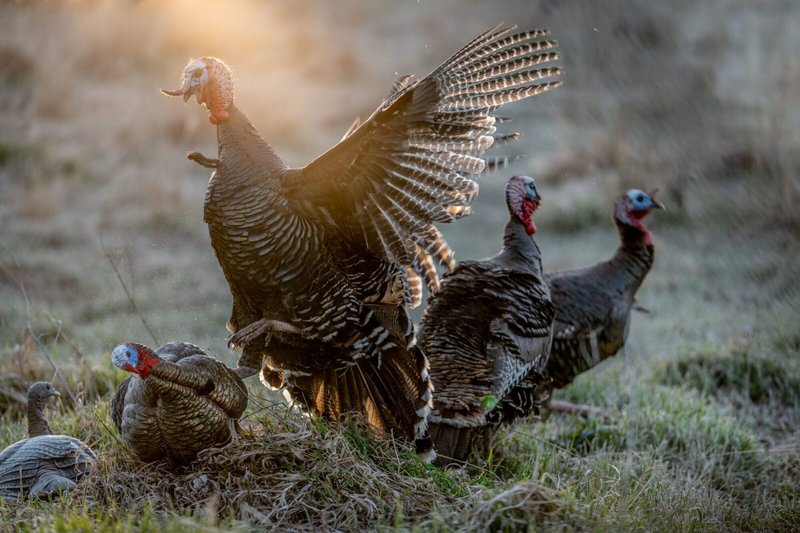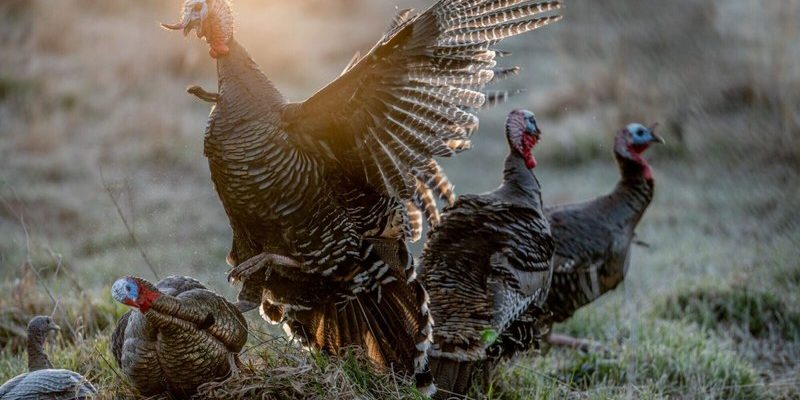
In this article, we’re diving into the intricacies of turkey social habits and communication styles. We’ll explore how these feathered friends interact, what their vocalizations mean, and how you can observe the nuances of their behavior. Whether you’re a backyard birdwatcher or just curious about our fine-feathered friends, you’re in for a treat!
Understanding Turkey Social Structure
Turkeys are social animals that thrive in groups. Their social structure is quite fascinating and somewhat similar to the dynamics of a community, where everyone has a role to play. Wild turkeys typically gather in flocks, and these groups can range from just a few birds to large gatherings of up to 200. Within these flocks, turkeys establish a pecking order, with dominant birds leading the way and weaker ones following.
You might be wondering how this hierarchy works. Well, it’s usually determined by age, size, and overall confidence. Older, larger turkeys tend to assert dominance, while younger birds might be more cautious or timid. This social arrangement helps them navigate their environment together, finding food, protecting each other from predators, and keeping an eye out for danger.
Interestingly, even within these flocks, turkeys exhibit unique personalities. Some are more assertive and outgoing, while others prefer to stay on the sidelines. It’s a diverse gathering where everyone brings something different to the table—or the forest floor, in this case!
The Art of Turkey Communication
You might think of turkeys as simply making a lot of noise, but their vocalizations are a rich tapestry of sounds that convey different messages. From a simple “gobble” to a soft “purr,” each sound serves a unique purpose.
For instance, the classic gobble is primarily used by male turkeys, especially during mating season, to attract females and assert their territory. It’s like a call to arms—or, in this case, to find love. Females, on the other hand, might cluck softly to signal to their young or other flock members when it’s time to move.
What’s truly remarkable about turkeys is their ability to adapt their communication depending on the situation. If they sense danger, they may produce a series of alarm calls that can alert the entire flock to possible threats. These alert calls can vary in pitch and urgency, helping the birds assess the level of danger together.
Social Bonding and Grooming
Just like humans, turkeys enjoy spending time together, and one significant aspect of their social interaction is grooming. You might catch turkeys preening each other’s feathers, a behavior that not only keeps them clean but also strengthens their bonds.
This act of grooming isn’t just about hygiene; it’s a way for turkeys to show affection and support within the group. It’s as if they’re saying, “I’ve got your back!” Plus, it helps them establish trust and maintain relationships—important aspects of living in a community.
Another interesting aspect is how they play. Yes, turkeys engage in playful behavior, especially young ones. They’ll chase each other around, flap their wings, and even take playful leaps. It’s all part of fostering social ties and developing skills they’ll need once they mature.
How Turkeys Use Body Language
When talking about turkey behavior, we can’t overlook their body language. Just like humans, turkeys communicate a lot through their physical movements and postures.
For example, when a turkey feels threatened, it may puff up its feathers and stand tall, making itself look larger. This display is a way to intimidate potential predators or rivals. On the flip side, a relaxed turkey will often tuck its wings to its body and lower its head, indicating comfort and calmness within the flock.
You’ll also notice that turkeys can be quite expressive with their tails. A fanned-out tail can signal excitement or a readiness to mate, while a tucked tail may indicate submission. Observing these subtle movements can give you deeper insight into their emotional state—a skill that might take a little practice, but it’s well worth it.
Turkey Parenting: A Nurturing Approach
When it comes to parenting, turkeys exhibit very caring behaviors. Female turkeys (hens) are known for being attentive mothers. After laying eggs, a hen will stay with her nest, protecting her eggs from predators and environmental threats.
Once the eggs hatch, the hen leads her poults (baby turkeys) around to forage for food. They learn from her by mimicking her actions—kind of like how kids learn by watching their parents! Hens communicate with their young through soft clucks, guiding them towards safety and food.
Interestingly, the bond between a mother turkey and her poults is incredibly strong. Hens may raise their young together in groups, which helps ensure that the little ones have a better chance of survival. It’s a beautiful demonstration of cooperation found in nature.
Understanding turkey behavior gives us a window into the social lives of these fascinating birds. Their communication, social structures, and nurturing habits paint a picture of a complex community that thrives on interaction and relationships.
Next time you see a group of turkeys, take a moment to observe. You’ll likely notice the intricate ways they engage with one another—from their unique vocalizations to their expressive body language. It’s like watching a brief episode of a wildlife drama right in your backyard! By recognizing the depth of their behaviors, we can appreciate these remarkable creatures even more. So grab your binoculars, and enjoy the show!

